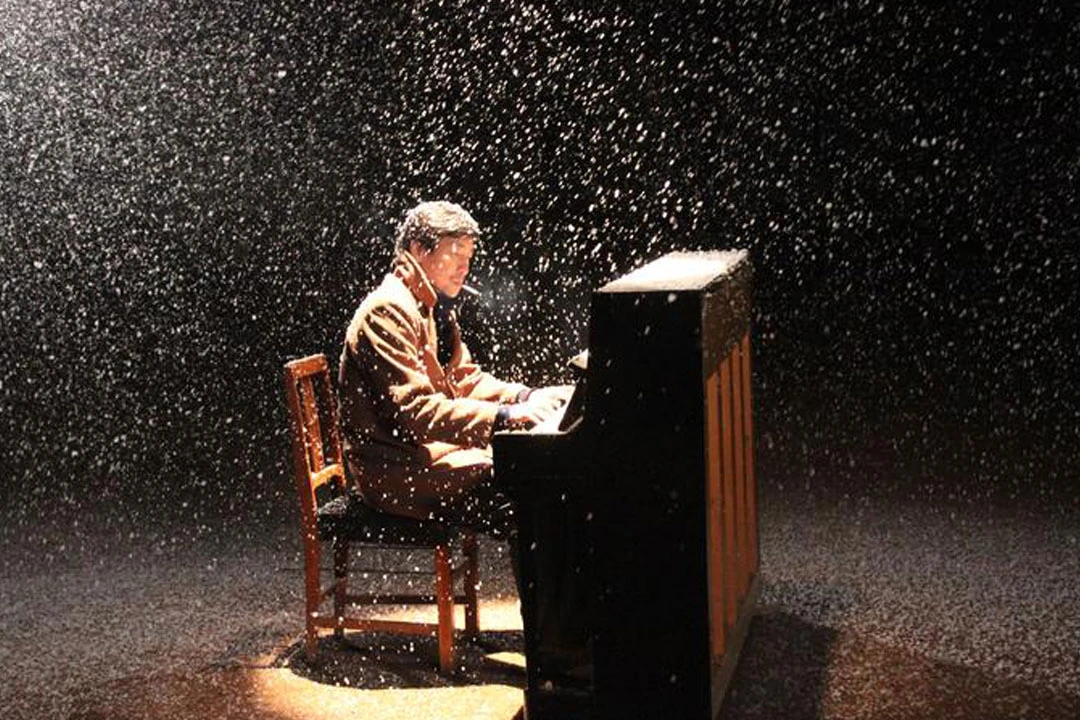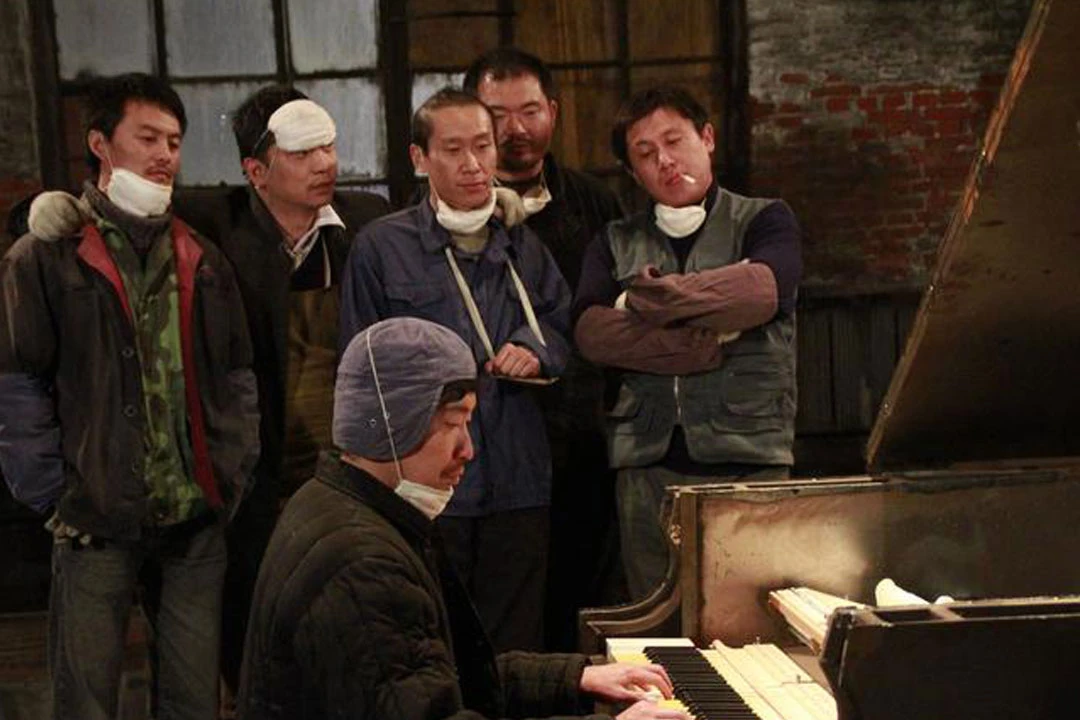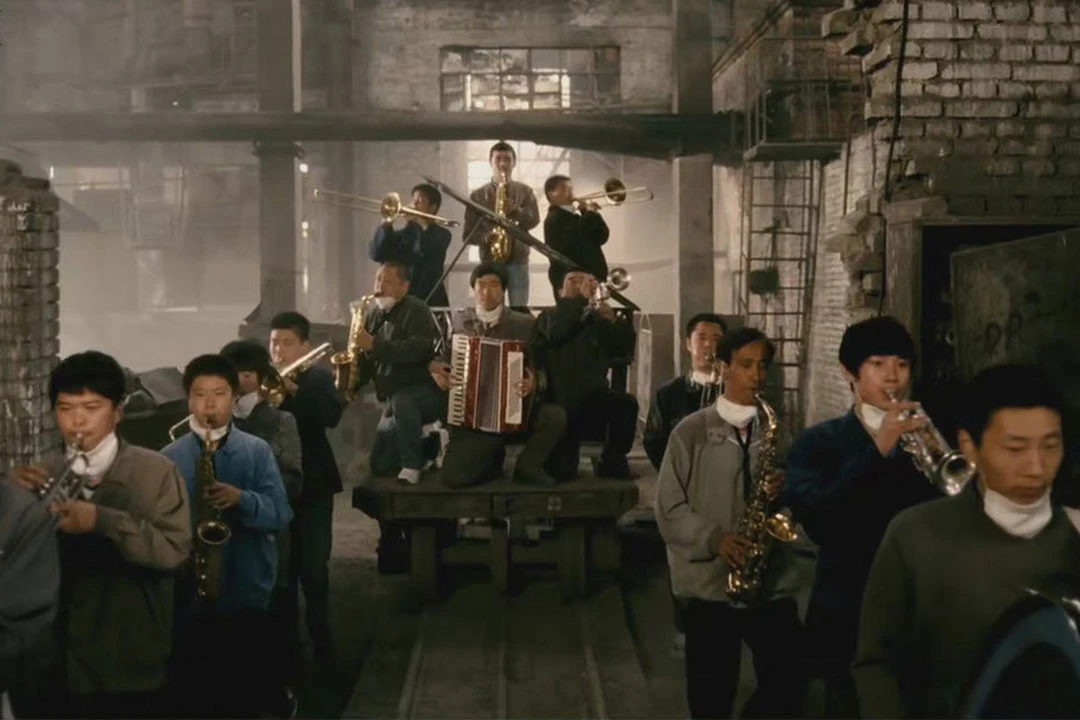In the tapestry of world cinema, certain films emerge as poignant reflections of societal transformation, weaving together threads of humor, pathos, and social commentary. One such gem from Chinese cinema stands out for its unique blend of dark comedy and profound insight into the human condition. This remarkable film, with its impressive audience rating, invites viewers on a journey through the lives of factory workers caught in the whirlwind of economic reform, their dreams as resilient as the steel they once forged.
From Factory Floor to Concert Hall: The Unlikely Journey of Steel and Dreams
At the heart of this cinematic masterpiece lies a story of extraordinary determination and creativity. In a landscape scarred by the relentless march of progress, we encounter a group of workers who refuse to be silenced by the cacophony of change. Their response to adversity is both surprising and deeply moving: they decide to build a piano out of steel, transforming the very material that once defined their livelihoods into an instrument of hope and self-expression.
The piano, far more than a mere musical instrument, becomes a powerful symbol throughout the film. For the father figure at the center of the story, it represents a deeply personal quest for self-realization. In a world where traditional identities and roles are rapidly eroding, the act of creating music from the remnants of their industrial past becomes a defiant statement of existence and worth.
This unlikely endeavor serves as a metaphor for the resilience of the human spirit in the face of overwhelming odds. As the workers painstakingly craft their steel piano, we witness a beautiful transformation. The factory floor, once a symbol of their lost livelihoods, becomes a workshop of dreams. The rhythmic clanging of machinery gives way to the delicate tuning of piano strings, creating a symphony that bridges their past and their uncertain future.
“The Piano in a Factory” (钢的琴) masterfully portrays the challenges faced by these individuals as they struggle to adapt to a rapidly changing economic landscape. We see them grappling with unemployment, financial insecurity, and the loss of social status. Yet, amidst these hardships, their determination to create something beautiful from the ashes of their former lives shines through, offering a powerful testament to human creativity and perseverance.
Laughter Amidst Ruins: Finding Harmony in a Changing China
What sets this film apart is its deft use of dark humor to illuminate the often-absurd realities of life in a society undergoing radical transformation. The director employs a delicate balance of comedy and pathos, allowing viewers to laugh even as they confront the harsh truths of economic displacement and social upheaval.
The characters we encounter are richly drawn and deeply human, their foibles and quirks as endearing as they are recognizable. Through their interactions and dialogues, we are treated to moments of genuine humor that arise organically from the situations they face. The witty repartee and situational comedy serve not just as comic relief, but as a lens through which we can examine the absurdities of their circumstances.
Yet, beneath the laughter lies a current of melancholy. The film does not shy away from portraying the real struggles and disappointments faced by its characters. We see dreams deferred, relationships strained, and dignity challenged. The humor, rather than diminishing these hardships, serves to highlight them, creating a poignant contrast that resonates deeply with viewers.
The visual language of the film further enhances this duality of humor and sorrow. The director's camera lovingly captures the decaying industrial landscape, finding beauty in rust and rubble. These images serve as a stark backdrop to the characters' journey, emphasizing both the magnitude of the changes they face and the improbable nature of their musical quest.
Music plays a central role in the narrative, not just as a plot device but as a character in its own right. The gradual emergence of melody from the cacophony of their efforts mirrors the characters' own journey from despair to hope. The soundtrack, blending industrial sounds with more traditional musical elements, creates a unique auditory experience that perfectly complements the film's thematic concerns.
As the story unfolds, we are invited to reflect on larger questions about the nature of progress and the human cost of economic development. The film offers no easy answers, instead presenting a nuanced portrait of a community in transition. It challenges viewers to consider the value we place on art, community, and individual dignity in an increasingly materialistic world.
The performances by the ensemble cast are nothing short of remarkable. Each actor brings depth and authenticity to their role, creating characters that feel genuinely lived-in. Their ability to convey complex emotions through subtle gestures and expressions adds layers of meaning to every scene, inviting multiple viewings to fully appreciate the intricacies of their portrayals.
This Chinese film stands as a powerful testament to the resilience of the human spirit and the transformative power of art. Through its unique blend of dark humor and social commentary, it offers a window into the complexities of life in a rapidly changing society. The story of workers building a piano from steel becomes a metaphor for the broader human struggle to find meaning and purpose in a world that often seems indifferent to individual dreams.
As viewers, we are left with a profound sense of both the challenges and the possibilities that arise in times of great change. The film reminds us that even in the face of seemingly insurmountable odds, the human capacity for creativity, humor, and hope remains undiminished. It stands as a celebration of the indomitable spirit of ordinary people who, like the steel piano they create, find a way to make music amidst the discord of life.



